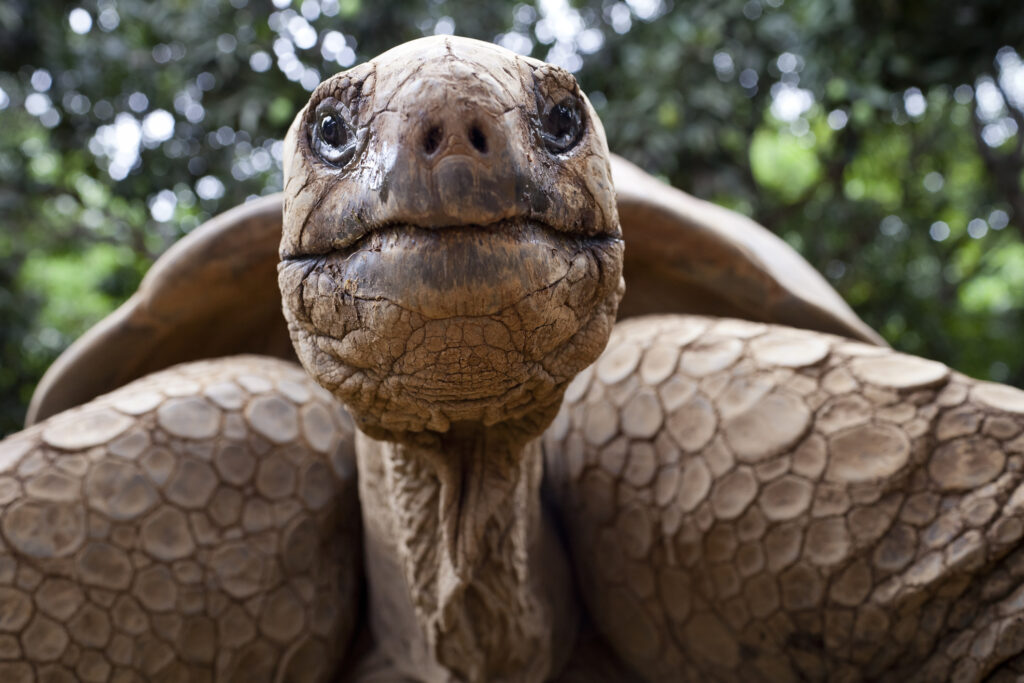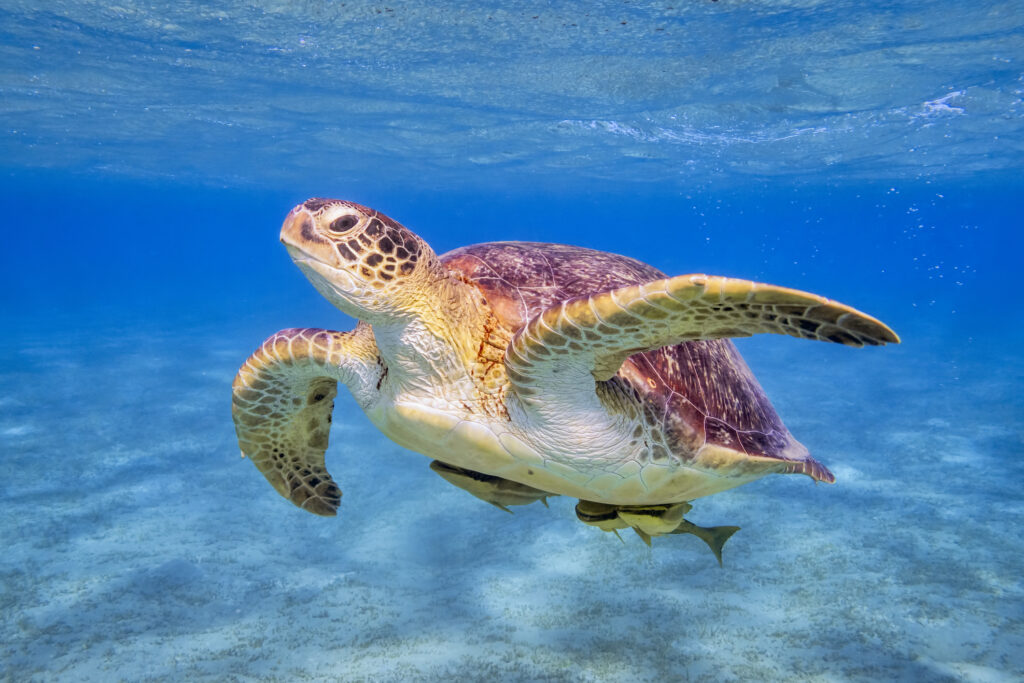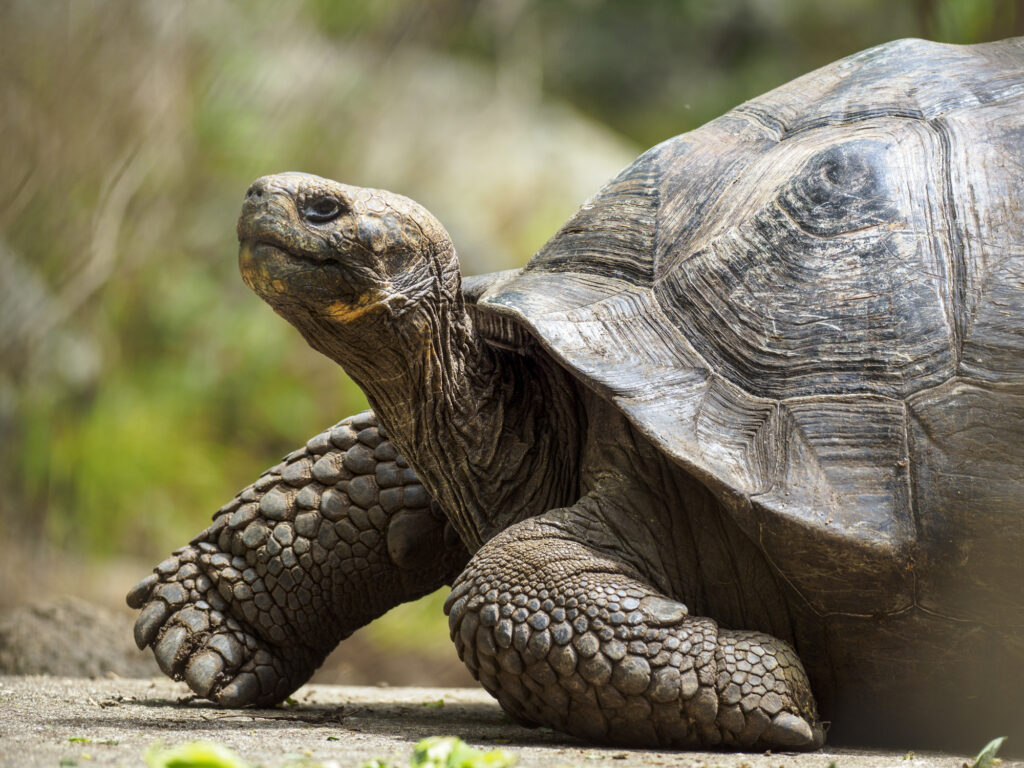Throughout the animal kingdom, there are various creatures that look alike but are entirely different species, such as hares and rabbits, seals and sea lions, and the subjects of this blog, turtles and tortoises. While they are both reptiles with decades-long lifespans, they have some distinct differences that set them apart.
In this blog, we’ll shell out the differences (and similarities) of these incredible animals that decorate most corners of the globe.
What are the physical differences between turtles and tortoises?
Despite their similarities, several key differences separate the two creatures. Let’s learn how to differentiate a tortoise from a turtle.
Shell: Tortoises tend to have large, dome-shaped shells. Turtles have more lightweight and flat shells, built to glide through the water at up to 22mph!

Legs: Arguably the most obvious difference between a turtle and a tortoise is that a turtle has flippers or webbed feet. These are designed to help them move through water, whereas a tortoise has a more conventional set of legs so that they can walk on land. When a turtle walks on land, its flippers are used to drag itself across the land, instead of stepping.
Behaviour and habitat of turtles versus tortoises
As well as physical differences, turtles and tortoises also behave very differently and live in very different environments. So, what are the behavioural differences between a tortoise and a turtle?
Habitat: Turtles spend the majority of their time in rivers, the sea or ocean, although they do spend some time on land and are usually hatched on beaches. Tortoises, on the other hand, spend their time exclusively on land. This is the reason for their very different limbs.
Diet: Turtles survive on a varied diet, feeding on fish, shrimp, jellyfish and crab, as well as underwater plants, making them omnivores, like humans. Tortoises are herbivores and live exclusively on a diet of plants. Some species are omnivorous and if given opportunity will scavenge on carcasses of other animals.
Lifespan: For wild animals, both turtles and tortoises have relatively long lifespans. In captivity, Turtles have been known to live for 20-30 years. However, Tortoises can live for well over 100 years old.

Fun Facts about Turtles and Tortoises
- Hot or cold: The sex of most species of turtle and tortoise offspring is determined by the temperature at which the eggs are incubated. This phenomenon, known as temperature-dependent sex determination (TSD), is particularly prominent in many species of sea turtles. Warmer temperatures generally produce females, while cooler temperatures result in males. This temperature sensitivity adds an intriguing layer to their reproductive biology and highlights the vulnerability of these species to climate change. Temperature fluctuations can skew gender ratios in nesting areas.
- Rubbing shell-ders with the dinosaurs: Turtles and tortoises are among the oldest living reptiles, having existed on Earth for over 200 million years. These resilient creatures coexisted with dinosaurs and have weathered numerous environmental changes throughout history. Their ability to adapt and survive has contributed to their longevity, making them fascinating living relics with a rich evolutionary history.
- Fasci-dating: Courtship rituals among turtles and tortoises can be elaborate and fascinating. Male turtles often exhibit unique behaviours, such as head bobbing, biting, or displaying vibrant colours, to attract females. The courtship of sea turtles involves synchronised swimming and vocalisations. Nesting is another intriguing aspect, with females often returning to the beaches where they were born to lay their eggs.
- Sense-ational: Turtles and tortoises have developed various sensory adaptations. Their sense of sight may vary among species. Many have an acute sense of smell and can detect pheromones to locate potential mates or identify their territory. Their hearing is also well-developed, and some species can produce sounds for communication, especially during courtship.

You should now be equipped with the knowledge you need to be able to tell a tortoise from a turtle. Why don’t you put your skills to the test at your next visit to Blue Planet Aquarium? You can see our turtles and tortoises at our Lake Malawi exhibit!
